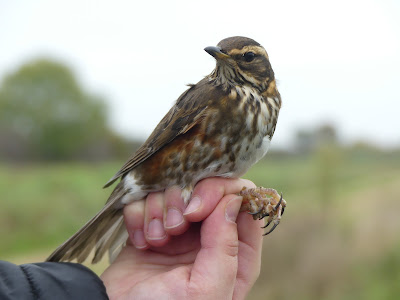Every year we get a large (for us) team together to monitor Mute Swans. This is part of the continuing project lead by Mike Reed to assess swan movements and longevity. We make capture of birds in their hatch year a priority as they are of a definite known age and they also provide an insight into productivity for that year.
The team for today was MR, CL, DKL, PWL, DMD, CVG, PAM, EPL, CJH and EGB.
Swans were captured by hand, ringed and fitted with individually identifiable darvic leg markers at Whitlingham Country Park, Hoveton bridge, Wroxham Broad and Potter Heigham. The individually coded rings allow further observations without the need to capture the birds. We also recorded a further 20 birds that had been ringed and marked under this project previously.
For many of the team this was a new experience, completely different to mist netting and ringing passerines that makes up so much of the training to ring. Our group did exceptionally well, working together in a real team effort to achieve a good day of monitoring.
Mallard catching proved more difficult than the swans
It was particularly pleasing to capture a small family group at Potter Heigham. This group of cob, pen and a single cygnet were the only swans at this location. The pen was captured first and fishing line with a hook embedded in her foot was successfully removed before she was fitted with a metal ring, darvic coded 4GTW and released.
Looking at the number of cygnets ringed to adult birds, this catch seems to be down compared to our last two winters. In early 2022 we did two days at the same sites and got 23 birds hatched in 2021 and 54 adults. Adult numbers were high due to an absence of monitoring during 2020 and 2021 as a result of the Covid19 pandemic. The catch in 2023 was in early December and at that time of the 32 birds marked it was an even split 16/16. This session, we only got 7 cygnets and 18 adults. Mute Swans are long lived birds and a breeding season may be abandoned by some pairs if conditions are too problematic. It's not straight forward to interpret how this might reflect on this years breeding season as it was very wet at the start of the year and some first attempts may have been unsuccessful. This is not just a case of possibility of flooding. We know of a case where the nest was built at the edge of the water and by the time the flooding subsided there was too much dry ground between the nest and the water. This attempt failed and the birds did not try again at that site.
This autumn has been unseasonably warm. We only saw one obvious family party and they were not with other swans. There may still be family parties where the young remain with the parents out on the broads and in general, there may still be birds that have not yet needed to move to areas such as Hoveton Bridge, where there is a designated feeding platform and the public regularly feed birds. In the winter this tends to inflate the numbers of swans present at this site. It was noted that some cygnets, either independent of parents or where parents are 'encouraging' them to leave were kept away from food or did not join the feeding flock, remaining distant from a few, more mature, aggressive individual birds. These factors play into the numbers present and captured in addition to other possible factors such as the potential effect of weather conditions and Avian Influenza over the past few years.
Many thanks to the Broads authority and trustees of Whitlingham Country Park for permission to monitor at these sites. All ringing activities undertaken under the appropriate British Trust for Ornithology licence and relevant endorsements.
Please report any sightings to Mike Reed - mike.reed2017@outlook.com
Totals: 27 new, 1 recapture, 20 re-sighted
Mute Swan - 25 (1) [20]
Mallard - 2
6M Mute Swan
































